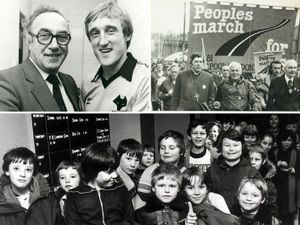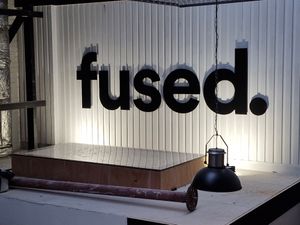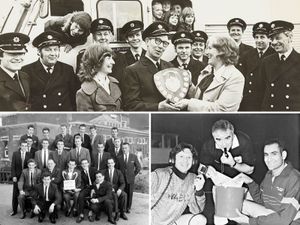Why the Amritsar massacre remains unfinished business 100 years on
It is one of the "bloodiest acts of colonial violence" in the history of the British Raj, painfully etched in the memory of Indians across the globe.
Now 100 years on from the barbaric Jallianwala Bagh massacre carried out by British troops in Amritsar, Panjab, the wounds it created are still present for many people across the West Midlands.
The calculated move ordered by Brigadier-General Reginald Dyer to oppress Indians and submit them to British rule saw hundreds of unarmed civilians killed and thousands injured on April 13, 1919.
It came at a time when Sikhs were celebrating their most auspicious festival of Vaisakhi, with blood shed just walking distance from the sacred Golden Temple.
'We can't just forget'
Dr Opinderjit Kaur Takhar, director of the UK's first Centre of Sikh and Panjabi Studies at the University of Wolverhampton, said: "We can't just forget about this atrocity.
"Especially the very fact that when Dyer, the perpetrator, came back to Britain, he was lauded for his efforts.
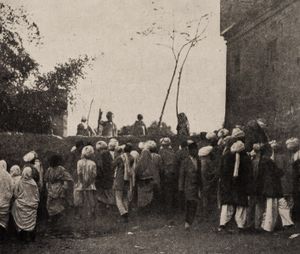
"It's a blight on colonial history. This was really the turning point in the freedom struggle. It very much created the sense of them and us - 'we are the ruled and they are the rulers, and they can do as they please'."
Official figures from the UK government claim 379 people were killed and 1,200 wounded, with Sikhs, Hindus and Muslims falling victim to the British military.
But this remains disputed, with Indian sources claiming more than 1,000 lives were taken and more than double left injured.
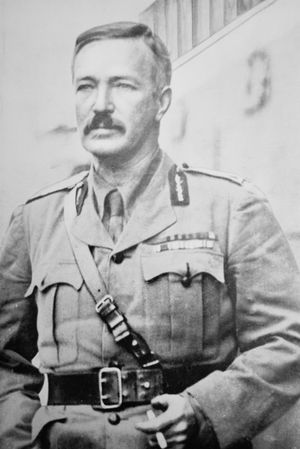
Dr Takhar said the community may never know the true scale of the "merciless act of violence" and the number of innocent civilians butchered in the open-air garden.
The senior lecturer, who wants the colonial history of India to feature on the curriculum within British schools and history courses, added: "The numbers are something we just don't have a definite answer on.
"This is because people may have been hurt and not said anything, or they may have later passed away as a result of their injuries.
"The actual numbers, we will never know."
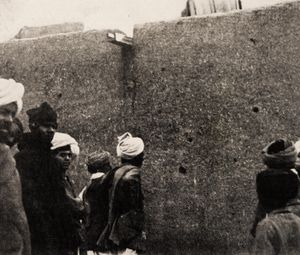
The Centre of Sikh and Panjabi Studies will commemorate the centenary of the tragedy, also known as the Amritsar massacre, with a special public lecture at the university from 6.30pm on April 30.
Speakers from across the country will delve into the history of the tragedy and its significance in Panjabi history, including Wolverhampton businessman Sham Sharma.
Apology?
He has claimed UK government officials have had "some sort of insomnia", erasing from their memories the barbarity of British rule across India from 1858 to 1947.
Apologies need to be made not just for the massacre in Amritsar but also other significant events in Anglo-Indian history, including the "chaos" of the 1947 partition of India and the widespread famines which killed millions, he said.
Mr Sharma, who is also chairman of the Wolverhampton Business Forum, added: "We don't want repatriation, we want some sort of apology for the crimes committed.
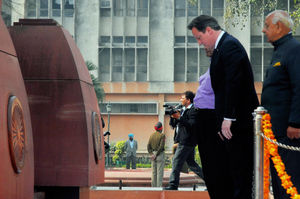
"They were brutal, unforgiving and oppressive. It built on our animosity that somebody like Dyer could get away with it.
"So much of the history has been swept under the carpet."
Mr Sharma, who received an honorary fellowship from the University of Wolverhampton last year, recalled his surreal experience of visiting Jallianwala Bagh.
The public garden now houses a memorial, with bullet holes which ripped through bodies still preserved in the walls.
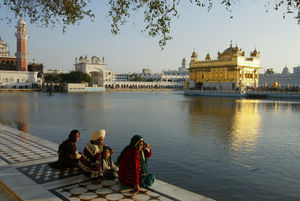
Mr Sharma, the owner of Lichfield Street's Zuri Coffee, said: "It's an eerie feeling when you go through.
"You can hear it in you ears, the cries. You can hear the bullets being fired, the smell. It's so sombre, you can feel that atrocity being played out in front of your eyes.
"You can imagine what happened. You can imagine the horror they would have gone through."
From peaceful protest to massacre
A crowd of at least 10,000 gathered in Jallianwala Bagh on that fateful afternoon, many launching a peaceful protest against the controversial and oppressive Rowlatt Acts and others visiting for Vaisakhi.
Mr Sharma added: "Imagine you are sitting in West Park, children are there with their grandparents. Parents are there too.
"It's a sunny day, there's a light breeze, people are having fun. Suddenly you hear these tanks rolling down the street, you see this army with machine guns.
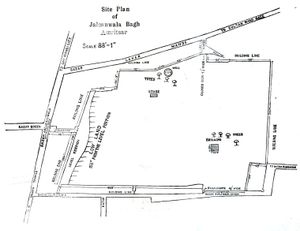
"Just imagine if West Park was drenched in blood, how would people feel here?
"This has to be highlighted in history books."
Author Harjinder Singh, of Walsall-based Akaal Publishers, claimed there was little knowledge of the massacre among the British community until recently.
The Sikh and Panjabi studies tutor said he struggled to find material written in the 20th century when trying to carry out research into the Jallianwala Bagh attack.
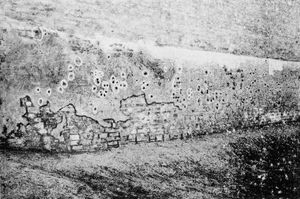
The 41-year-old said: "Historically, I couldn't find a lot about it. 100 years on these books are being written, but they should have been written then.
"For the Sikh community, it's a thorn. There's never been an apology.
"The military shot people brazenly and killed them, when it was a peaceful rally - there was no need.
"It was just how the Raj was, they wanted to teach the people a lesson. Indians were seen as sub-human, I don't think they saw it as an atrocity."
Anger
Dyer stormed Jallianwala Bagh with 50 armed soldiers loyal to the British Raj, ordering them to open fire on the tens of thousands without warning.
Avtar Singh, chairman of Wolverhampton-based Council of Gurdwara Management Committees UK, said the Panjabi community was 'still angry' about the massacre 100 years on.
He said the UK government should not feel ashamed of the actions of its predecessors but an apology is needed to 'bring calm' to the situation.
The 64-year-old, who came to the UK in 1980, said: "People couldn't get out, they were running around, trying to jump over the walls and being shot.
"It was, indiscriminately, shoot to kill, teach a lesson."
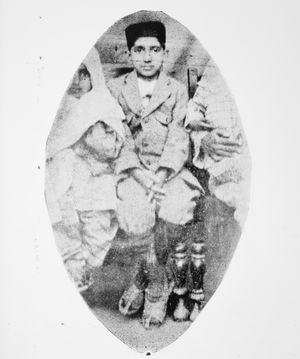
He went on to reveal the poignant but difficult meetings he has had with a number of families whose descendants were gunned down in the massacre.
Mr Singh added: "The Panjabi community and Sikhs are peace-loving people but still, the anger is there, and it does not go away.
"It's very emotional when you lose family members like that, it's hurtful."
After the slaughter
After the ruthless slaughter of the unarmed civilians with fierce gun fire - 1,650 rounds in just 10 minutes - Dyer and his troops abandoned the dead and wounded.
A evening curfew in place forced the blameless victims to remain trapped in Jallianwala Bagh, with the wounded unable to seek any medical treatment.
Former Sandwell councillor Gurinder Singh Josan said tales of the aftermath faced by the victims "added to the horror" he felt.
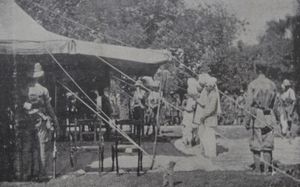
Mr Josan, who sits on the West Midlands Strategic Policing and Crime Board, said the British government should "undoubtedly" feel shameful and a full apology is needed.
The Smethwick resident added: "It's just horrific. This did not happen on a battlefield, this was not two armies facing off. This was a very heavily-armed unit on the one side and unarmed civilians on the other side.
"I think the community still feels that this is unfinished business. We consider ourselves to be British but we also know this episode exists in our shared history.
"It cannot be erased. We live in a society which is very multicultural, very diverse - that makes Britain what it is today. We should certainly know this history."
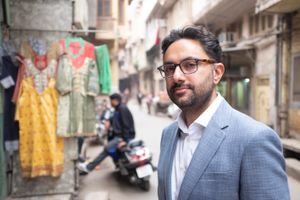
Wolverhampton-born writer Sathnam Sanghera has also spent months researching what has been dubbed as "one of the darkest days in British and Indian history".
In 'The Massacre which Shook the Empire', set to air on Channel 4 tonight, he will explore the catastrophe, retracing the build up to the 'shocking' moment and meeting relatives of those responsible.
The journalist, whose memoir 'The Boy With The Topknot' was adapted for television, said: "I've put my heart and soul into this investigation into what happened in Amritsar 100 years ago.
"What I've found out has changed the way I see Britain and my place in it, and I hope it has a similar impact on people who watch it."
MORE: Why was general hailed a hero?
The Jallianwala Bagh massacre became the defining moment in India's struggling battle for independence, with millions losing faith in the British Raj and turning towards the fight to self-rule.
Crowds of unarmed civilians in the public space were callously gunned down by troops under the command of Brigadier-General Reginald Dyer - who claimed the mass shooting was to "save the British Raj".
The notorious act of violence came just days after Panjab's lieutenant governor Sir Michael O'Dwyer deported two nationalist leaders opposing the controversial Rowlatt Acts designed to extend wartime restrictions.
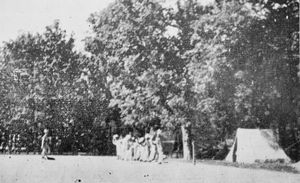
Widespread calls for their release followed their arrest on April 10, including riots in Amritsar, with both Indians and Europeans killed.
Dyer, who was then based in the city of Jalandhar, decided to go to Amritsar in an attempt to restore order and announced a ban on public meetings.
But his message failed to reach all Indians gathering at Jallianwala Bagh for a peaceful protest and others enjoying the spot during the Sikh festival of Vaisakhi, historian Parmjit Singh said.
Together with 50 riflemen, Dyer negotiated through the narrow passage leading to Jallianwala Bagh but was unable to squeeze his armoured tanks into the walled enclosure.
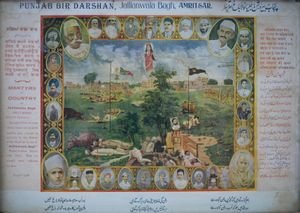
Convinced the mass gathering of up to 20,000 was a deliberate defiance of British rule, at 5.15pm Dyer ordered the troops to fire towards the crowd - which included victims aged from eight to 80, and even possibly war veterans.
Mr Singh, co-author of new book 'Eyewitness at Amritsar: A Visual History of the 1919 Jallianwala Bagh Massacre', said: "He makes up his mind that he is going to go in there and shoot them because he thinks they are a rebel army.
"They start to shoot at the crowd, there was no notice. The bullets start to rip through bodies - they were not going through one body, they were going through two or three.
"The crowd started to run away from Dyer, some exits were blocked, some were very narrow. They were climbing up trees, up walls. Wherever they went, Dyer directed the gunfire at them.
"Dyer eventually stopped, they saved about half of their ammunition so they had enough to escape. He leaves the wounded and goes back to his headquarters."
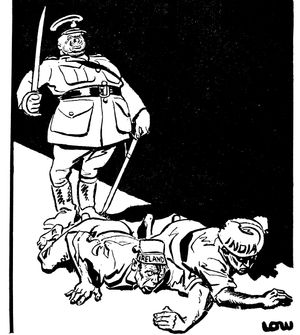
A total of 1,650 rounds of bullets were fired during the brutal slaughter lasting up to 10 minutes on April 13, 1919.
Mr Singh said families of victims were left "terrified" to collect the bodies of the dead as a regular evening curfew put them at risk of being shot if seen on the street.
Dyer returned home a hero, lauded in the House of Lords, with readers of The Morning Post raising £26,000 in support.
But his actions were denounced by the House of Commons and he was forced to retire.
Mr Singh latest book with co-author Amandeep Singh Madra features unseen photographs smuggled out of Indian.
The pair will officially launch the new read at London's National Army Museum tonight, alongside Wolverhampton-born writer Sathnam Sanghera.
Region’s politicians in call for Government apology
Politicians from across the region have united in calls for a public apology over the savage massacre of Indian civilians 100 years ago.
Wolverhampton South East MP Pat McFadden is leading a cross-party campaign demanding the Government apologise for the Jallianwala Bagh massacre in Amristar, Panjab. More than 80 MPs have backed his calls.
Mr McFadden said: “I think this is one of the most appalling events in colonial history. Many people regard it as the moment when people in India gave up on colonial rule and the march towards independence became unstoppable.
“If if the Government doesn’t issue an apology, I think it would be an opportunity lost – to not acknowledge at an official level the lasting pain that this event caused.”
Mr McFadden decided to call for an apology, in a letter backed by cross-party MPs and sent to Foreign Secretary Jeremy Hunt, after concerns raised by his constituents.
Shameful
He said he was “disappointed” a full apology was not issued during Wednesday’s Prime Minister’s Questions, when Mrs May dubbed the massacre a “shameful scar on British Indian history”.
The MP added: “It was a missed opportunity. She simply repeated past statements of regret and did not take the extra step which should be taken to issue a full and proper apology.” The calls for a public apology have also been backed by West Midlands Mayor Andy Street, who claimed the massacre is a “stain” on British history.
He said he was moved during a visit to Jallianwala Bagh last October, realising how the “incomprehensible” actions of British troops shattered the lives of Sikh, Hindu and Muslim families.
Black Country politicians have also signed the letter including Walsall South MP Valerie Vaz, Warley MP John Spellar and West Bromwich West MP Adrian Bailey. They were joined by Wolverhampton South East MP Eleanor Smith, as well as MP for Wolverhampton North East Emma Reynolds.


